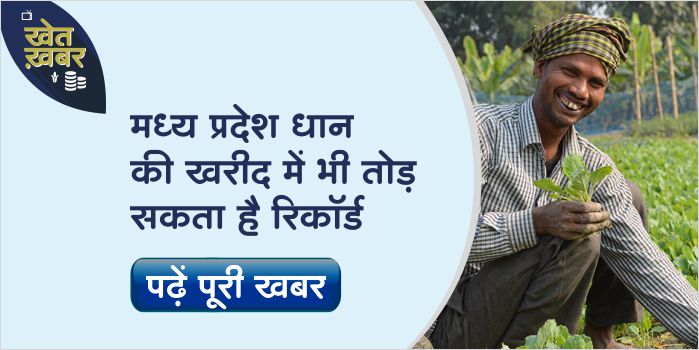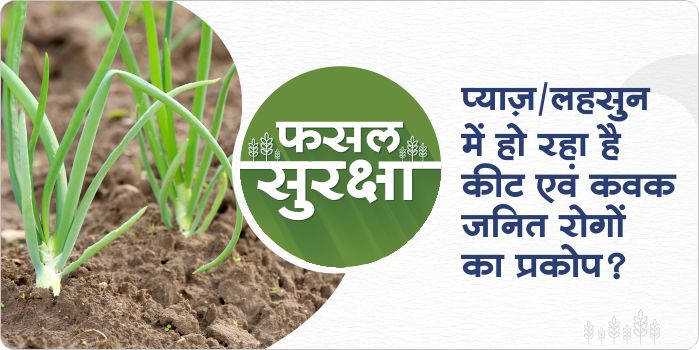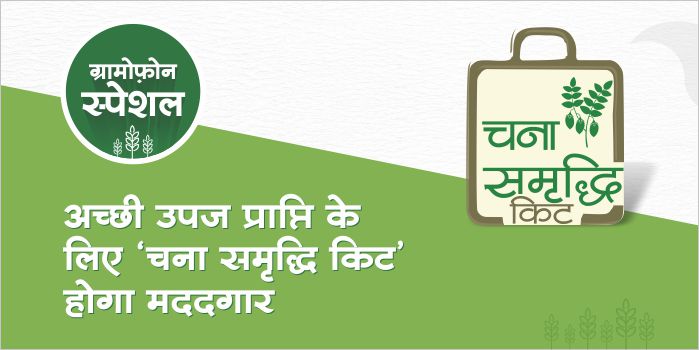- In gram weeds like annual grass, broadleaf weed, narrow leaf weed grow in huge numbers.
- For management of weed, control in time is very important.
- Weed management in 1-3 days of sowing: – use Pendimethalin 38.7%EC @ 700 ml / acre.
- Along with this, time to time hand weeding reduces the weed outbreak and increases crop production.
Role of pseudomonas bacteria in prevention of frost in crops
- Pseudomonas is a biological fungicide which also act as a bactericide.
- Pseudomonas prevent crops from harmful fungus as well as frost in rabi crops.
- Pseudomonas is a bacteria which can survive at the lowest temperature. Thus protecting crops from frost.
- Frost infestation is caused by a drop in temperature and Pseudomonas is more than capable to effectively control frost.
- Use Pseudomonas Fluorescens @ 250 gram/acre in 15-30 days of sowing as spray and as soil application.
- Use Pseudomonas Fluorescens @ 250 gram/acre in 30-40 days of sowing as spray .
- Due to sudden drop in temperature or if the fog is high, use it as required.
Importance of Calcium in Tomato crop
- Calcium is a very important component for the Tomato crop.
- It increases cell division in Tomato crop which in turn improves fruit production in Tomato crop.
- Calcium plays important role in preventing blossom end rot problem in Tomato.
- In tomato crop it helps in movement of tissues.
After wheat, now MP can create a record in the purchase of paddy
You would know that in the matter of procurement of wheat on support price, Madhya Pradesh had overtook Punjab for the first time and achieved the first position. Now it is expected that Madhya Pradesh may break its old record even in the purchase of paddy.
Significantly, last year, Madhya Pradesh had the highest procurement of 25.86 lakh tonnes of paddy. At the same time, it is estimated that 40 lakh tonnes of paddy will be purchased. Explain that in the last few years, many major changes have been made for the agriculture sector in the state. Due to steps like making an agriculture cabinet in the state, the agriculture sector has improved a lot. Now the results of these reforms are also coming out.
Source: Nai Dunia
ShareManagement of leaf curling disease in garlic crop
- The problem of leaf curling in garlic crops is due to thrips attack. This insect first scratches the leaves of garlic and then feeds on cell sap .
- This causes the leaf’s edge to burn and leaves of the whole plant turn yellow and the plants start wilting.
- For the management of leaf curling in garlic, use following products.
- Profenofos 50 % EC@ 500 ml/acre or Acephate 75 %SP @ 300 gm/acre or Lambda Cyhalothrin 4.9 % CS@ 250 ml/acre or Fipronil 5% SC @ 400 ml/acre or Acephate 50 %+ Imidacloprid 1.8 %SP @ 400 gram/acre.
Manage Onion and Garlic Crop in 30-40 days after sowing
- The onion and garlic crop is in full growth stage after 30-40 days of the sowing period, which makes the crop vulnerable to a lot of attacks from insects and fungal-borne diseases. For control of all these use the following products.
- For control of Fungal disease use Thiophanate Methyl 70% W/W @ 300 gram/acre or Tebuconazole 10% + Sulphur(s) 65% WG @ 500 gram/acre.
- For insect control Fipronil 5% SC @ 400 ml/acre or Thiamethoxam 12.6 % + Lambda Cyhalothrin 9.5%ZC @ 80 gram/acre.
- For good growth of crop use urea@ 25 kg/acre + micronutrient @ 10 kg/acre use as soil treatment.
- These products ensure there is good development of onion and garlic crops and increase in the production.
Give protection to your crop with PMFBY, get registration soon
Farmers are engaged in sowing of rabi crops. In such a situation, to protect your crops from future natural disasters, it is also necessary to insure crops. By doing this, crop damage is compensated. The government runs the Prime Minister Crop Insurance Scheme to compensate for crop damage. Under this scheme, crop protection takes place throughout the entire crop cycle from sowing to post harvest.
Registration work has started under the Prime Minister Crop Insurance Scheme Rabi 2020-21. In most states, farmers can insure till 15 December 2020. Under the Prime Minister Crop Insurance Scheme, indebted and indebted farmers who are landholders and sharecroppers can join.
Source: Kisan Samadhan
ShareBenefits of Onion Samridhi Kit
- Gramophone presents onion samridhi kit.
- This kit plays an important role in plant growth by converting essential nutrients found in soil into a soluble form.
- It eliminates harmful fungi found in soil and prevents damage to the plant
- This product is made of high-quality natural ingredients which helps in increasing the activity of microorganisms in the soil,
- It improves the pH of the soil and provides a good start to the roots ensuring its full development, which leads to good production of the crop.
- Improves soil structure, does not reduce the availability of nutrients in the soil, promotes root growth by improving nutrients through the root system
- It also increases absorption of nutrients from the soil by roots, promotes the activity of microorganisms in the soil.
Use Gram Samriddhi Kit to get good yield from gram crop
- This kit plays an important role in plant growth by converting essential nutrients found in soil into a soluble form.
- It eliminates harmful fungi found in soil and prevents damage to the plant
- This product is made of high-quality natural ingredients which helps in increasing the activity of microorganisms in the soil,
- It improves the pH of the soil and provides a good start to the roots ensuring its full development, which leads to good production of the crop.
- Improves soil structure, does not reduce the availability of nutrients in the soil, promotes root growth by improving nutrients through the root system
- It also increases absorption of nutrients from the soil by roots, promotes the activity of microorganisms in the soil
Gau-Cabinet to be developed in MP for development in animal husbandry
In Madhya Pradesh, the Chief Minister has decided to set up a Gau-Cabinet for the conservation and promotion of cow cattle. Animal Husbandry, Forest, Panchayat and Rural Development, Revenue, Home and Agricultural Development and Farmers Welfare Department will be included under this cabinet. Let us know that the first meeting of this cabinet is proposed on 22nd of November. The holy festival of Gopashtami is also celebrated on this day.
Significantly, the Chief Minister had also made the Agriculture Cabinet earlier. The decisions of this cabinet were implemented which resulted in increased production and productivity in the agricultural sector. Apart from this, the farmers also got the benefit of the schemes of the government, which benefited them financially. Now in the same way, the construction of cow cabinet will benefit the cow servants, cattle rearers and farmers.
Source: The Hindu
Share









